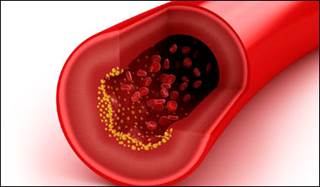A new study published in the New England Journal of Medicine reports that the 2013 American College of Cardiology and the American Heart Association (ACC/AHA) guidelines for the treatment of cholesterol would increase the number of U.S. adults eligible for statin therapy by nearly 13 million. Older adults without cardiovascular disease would comprise the majority of the increase.
The previous Third Adult Treatment Panel (ATP III) guidelines of the National Cholesterol Education Program (ATP-III) recommended statin therapy for patients with cardiovascular disease or diabetes and low-density lipoprotein (LDL) cholesterol levels of >100mg/dl. For primary prevention, LDL cholesterol level plus the Framingham risk score (10-year cardiovascular disease risk calculator) were used to determine whether statin therapy was warranted.
The new ACA/AHA guidelines recommend the following:
- Statin therapy to all adults with known cardiovascular disease regardless of LDL cholesterol level;
- Statin therapy for patients with an LDL cholesterol level of ≥190mg/dL (4.91mmol/L);
- Statin therapy for patients 40–75 years of age with diabetes or a 10-year risk of cardiovascular disease of >7.5% with an LDL cholesterol level of ≥70mg/dL (1.81mmol/L) or higher.
Michael J. Pencina, PhD, from the Duke Clinical Research Institute, and colleagues analyzed fasting sample data from 3,773 individuals ages 40–75 in the National Health and Nutrition Examination Surveys (NHANES) collected from 2005–2010. Of the total patients,1,583 (42.0%) were receiving or would be eligible for statin therapy based on the ATP III guidelines, vs. 2,135 participants (56.6%) who would be eligible based on the 2013 ACA/AHA recommendation. Using these statistics, the authors estimate that nearly half of the adult U.S. population between the ages of 40–75 with triglyceride level of <400mg/dL would be eligible for statin therapy (56 million, 48.6%). This is a net increase of 12.8 million potential new statin users and an increase of 11.1 percentage points over those eligible under the ATP III guidelines.
With the increase in adults eligible for statin therapy, the authors suggest that there will be higher treatment rates among both those who are and are not expected to have future cardiovascular events, particularly in men. The effect would be seen in older (ages 60–75) vs. younger (ages 40–59) cohorts, as 77% in the older age group would be eligible compared to 30% in the younger group.

